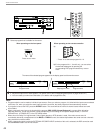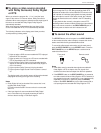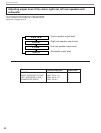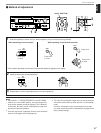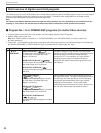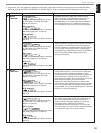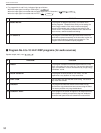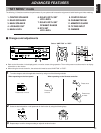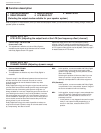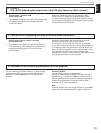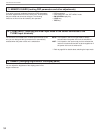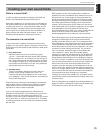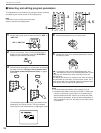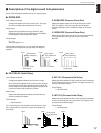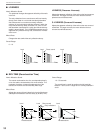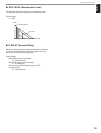
52
1. CENTER SPEAKER 3. MAIN SPEAKER 5. MAIN LEVEL
2. REAR SPEAKER 4. LFE/BASS OUT
(Selecting the output modes suitable for your speaker system)
Refer to pages 27 to 29 for details. (Once you have selected proper modes, you do not have to make a setting change, unless your
speaker system is modified.)
Ⅵ Function description
6. DOLBY DGTL SET
LFE LEVEL [Adjusting the output level at the LFE (low frequency effect) channel]
●
Control range: –20 dB to 0 dB
Preset value: 0 dB
●
This adjustment is effective only when Dolby Digital is
decoded and the signals of the selected source encoded
with Dolby Digital contain LFE signals.
Adjusts the output level at the LFE (low frequency effect)
channel. If the LFE signals are mixed with signals of other
channels and they are output from the same speakers, the ratio
of LFE signals to other signals can be adjusted. (Refer to page 5
for details about the LFE channel.)
ADVANCED FEATURES
●
Choices: MAX/STD/MIN
Preset position: MAX
●
This adjustment is effective only when Dolby Digital is
decoded.
“Dynamic range” is the difference between the maximum level
and the minimum level of sounds. Sounds on a movie
originally designed for movie theaters feature very wide
dynamic range.
Dolby Digital technology can bring the original sound track into
a home audio format with this wide dynamic range unchanged.
Powerful sounds of extremely wide dynamic range are not
always suitable for home use. Depending upon the condition of
your listening environment, it may not be possible to increase
the sound output level as high as a movie theater. However, in
a level suitable for listening in your room, the low level parts of
source sound cannot be heard well because they will be lost
among noises in your environment.
Dolby Digital technology also made it possible to reduce an
original sound track’s dynamic range for a home audio format
by “compressing” the data of sound.
MAX: In this position, a source encoded with Dolby Digital
is reproduced in the original sound track’s wide
dynamic range providing you with powerful sounds
like a movie theater.
Selecting this position will be more ideal if you can
listen to a source in a high output level in a room
specially soundproofed for audio/video enjoyment.
STD (Standard):
In this position, a source encoded with Dolby Digital
is reproduced in the “compressed” dynamic range of
the source suitable for low level listening.
MIN: In this position, dynamic range is more reduced than
in the STD position. Selecting this position will be
effective when you must listen to a source in an
extremely low level.
* In this position, it may happen that sound is output
faintly or not output normally depending on a
source. In that case, select the MAX or STD
position.
7. DOLBY DGTL SET
DYNAMIC RANGE (Adjusting dynamic range)



